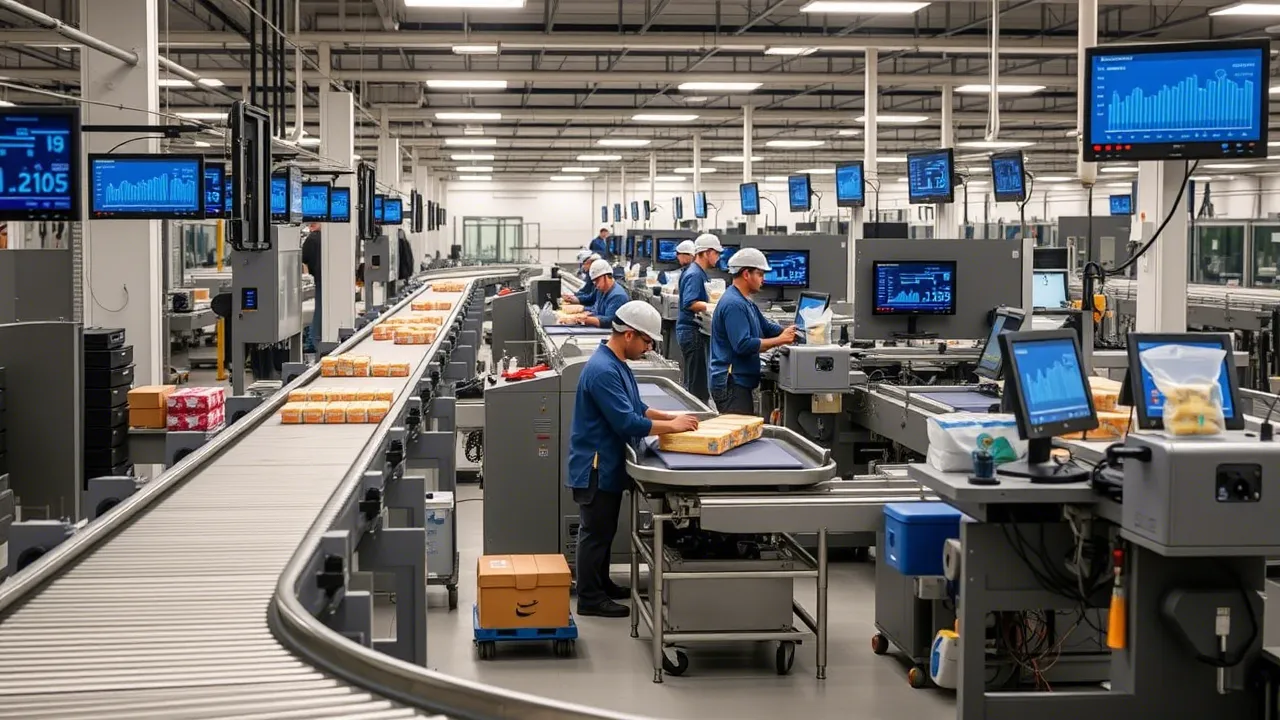Introduction:
Production systems, pillars of modern industry, are sets of human, material, technological, and financial resources organized to produce goods and services. In an increasingly competitive global market, optimizing these systems is crucial to achieve efficiency and competitiveness. How to do it? In this article, you will discover strategies for optimizing production systems, from classifying types to making strategic decisions, exploring their impact on the global economy.
1. Production System:
A production system is like an orchestra, where each element, from raw materials to machinery and human talent, is synchronized to create a symphony of efficiency. Its objective: to optimize production and minimize costs, driving business success.
2. Production, Company, and Market:
Company, market, and production system are gears that interconnect in an economic dance. The company, as the conductor, guides production; the market, as the audience, demands goods and services; and the production system, as the instruments, transforms resources into tangible products. Companies like Toyota or Amazon have perfected this interaction, achieving admirable efficiency.
3. Classification of Production Systems:
-
Continuous: Mass production, ideal for standardized and high-volume products, such as automobiles or processed foods.
-
Intermittent: Manufacturing on demand, such as furniture or construction projects. They are subdivided into:
- Closed Workshops: For products stored under catalog.
- Open Workshops: For products under specific order.
- Singular Projects: Unique and unrepeatable works, such as the construction of a bridge.
4. Decisions in Production Systems:
The right decisions are the engine of success in managing a production system. They are divided into two categories:
-
System Design: What technology to use? How to organize the production plant?
-
Operations Management: Planning, control, and management of the production flow. Decisions such as supplier selection or inventory management are fundamental.
5. The 3 Decision Levels in Operations Management (OM):
The 3 levels of OM:
-
Long-term planning (strategy)
-
Medium-term planning (tactics)
-
Daily production management (operations)
Each level has a significant impact on the success of the production system.
6. Logistics System (Production in a Broad Sense):
An efficient logistics system is the backbone of modern industry. It encompasses the physical distribution of products from the supplier to the end customer, optimizing time, costs, and consumer satisfaction. Companies like DHL or FedEx are examples of logistics excellence.
7. Industrial Production Management Systems:
There are various management systems to optimize production:
-
MRP (Material Requirements Planning): Optimization of inventory and purchases.
-
JIT (Just in Time): Minimization of stocks and cost reduction.
-
PERT (Program Evaluation and Review Technique): Planning and control of complex projects.
Companies like Apple use the JIT system to optimize their production, while projects such as the construction of large infrastructures benefit from the use of PERT.
8. Economic Production Activities According to the UN:
The UN classifies activities into agriculture, mining, manufacturing, construction, commerce, transportation, finance, and services. Each sector has its own characteristics and specific production systems. China, for example, stands out as a leader in industrial production, while countries like India or Brazil are in full growth in this area.
Conclusion:
Production systems, engines of economic development and the satisfaction of human needs, are key pieces in the gear of modern society. Optimizing them is essential to achieve efficiency, competitiveness, and sustainable growth in an increasingly demanding global market. Industrial efficiency: The key to success in the global market.
